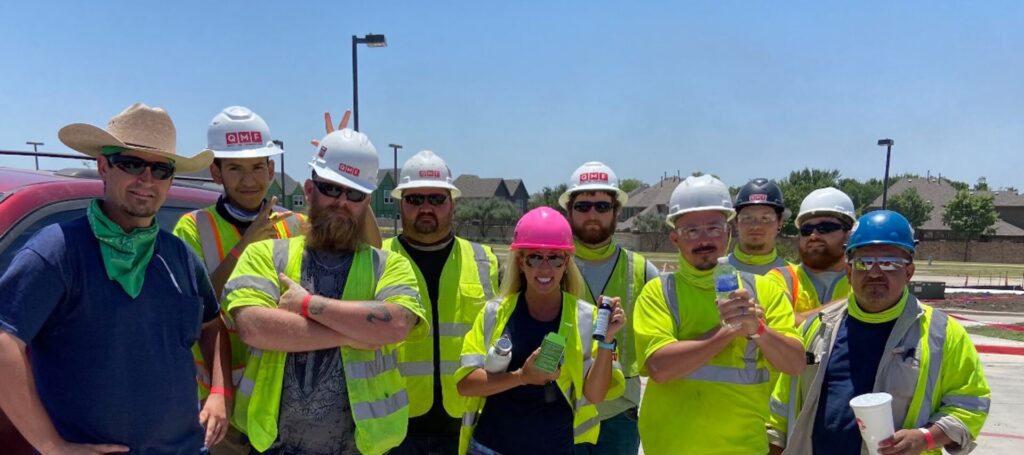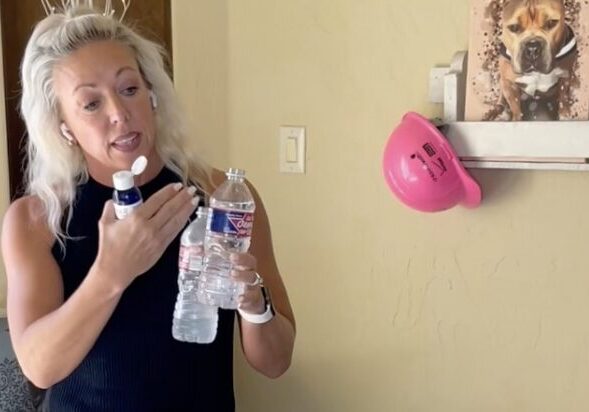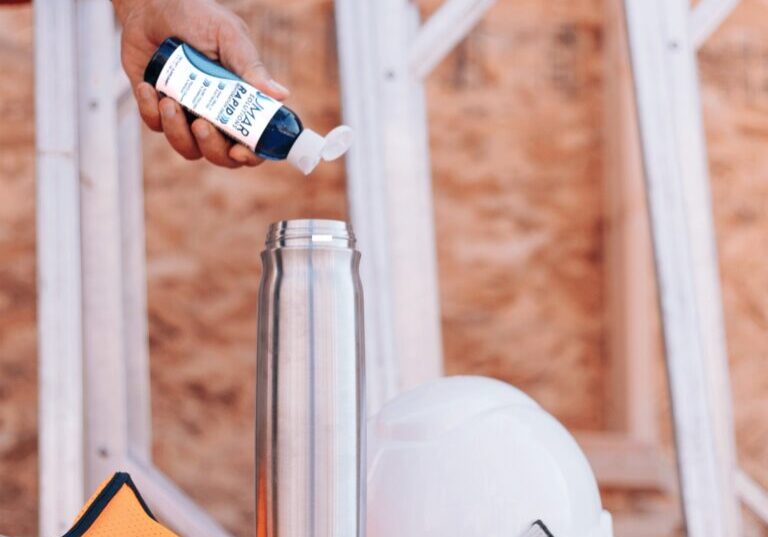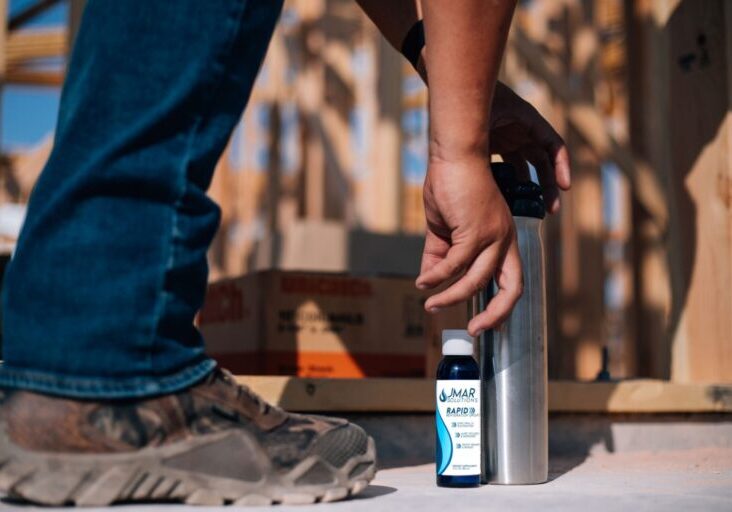The $100 billion annual cost of heat-related incidents isn’t just a safety statistic—it’s a performance crisis hiding in plain sight.
Behind every productivity dip, every afternoon slowdown, and every missed deadline on your construction site lies a simple yet overlooked factor: improper electrolyte balance among your workforce that rapid hydration drops could solve.
Safety managers watch it unfold daily. Morning productivity hums along, but by 2 p.m., efficiency plummets. Workers move more slowly. Decision-making falters. Mistakes multiply.
The real culprit? Electrolyte depletion that water alone cannot solve—a problem that Rapid Rehydration Drops directly address.
This performance drain affects every aspect of industrial operations, from meeting project timelines to maintaining quality standards. The connection between proper hydration and workforce output represents the most accessible performance enhancement available to safety professionals who need solutions beyond water or basic sports drinks, which have sugars and artificial dyes.
The Performance Crisis in High-Exertion Workplaces
The Afternoon Productivity Cliff
“People think they’re doing the right thing because they’re drinking water or sports drinks,” explains Jennifer Martinez, founder of JMAR Solutions. “But then they’re having migraines, headaches, and they’re having symptoms of being mineral-depleted.”
Studies show performance decreases of 12-27% during peak heat hours when workers rely solely on water for hydration. For the safety professional focused on both worker wellbeing and project efficiency, these numbers represent a significant operational challenge that hydration drops could solve.
The Hidden Financial Impact
The costs extend far beyond immediate productivity losses. When workers operate at diminished capacity due to improper electrolyte balance, the ripple effects include:
- Increased error rates leading to rework and quality issues
- Extended project timelines and missed deadlines
- Higher accident rates during afternoon hours linked to insufficient hydration
- Increased absenteeism due to heat-related illness
- Lower team morale and job satisfaction
For the safety manager who must justify every investment to upper management, these performance metrics tell a compelling story. The numbers prove what many have suspected: proper electrolyte balance directly boosts the bottom line. Workers who receive the right minerals at the right time simply perform better, longer. When you present these productivity gains alongside the reduced overtime and fewer safety incidents, the investment in quality electrolyte solutions practically sells itself.
Why Depletion and Dehydration is the True Performance Barrier
“Your body runs on minerals, not water,” Martinez points out. “When you’re depleted, you’re depleted of minerals. And when you’re thirsty, that’s your body telling you that you need minerals, not just water.”
This insight changes everything about how safety pros think about afternoon performance. That productivity crash isn’t just “how it is”—it’s a fixable problem rooted in mineral balance, particularly with rapid electrolyte drops added to water. When your brain and muscles lack the right electrolytes, they simply can’t perform. Quality industrial hydration solutions make a world of difference compared to plain water or those sugary sports drinks from the convenience store.
The Physiology of Performance and How Hydration Drops Help
How Electrolyte Drops Drive Worker Output
The connection between electrolytes and workforce performance lies in basic human physiology. Electrolytes like sodium, potassium, and magnesium regulate nerve impulses, muscle contractions, and fluid balance—all critical components of physical labor.
“In order to alleviate the ache, you have to replenish sodium and potassium,” Martinez explains. “Water alone will continue to deplete an already depleted person.”
Workers experiencing electrolyte imbalance show measurable decreases in:
- Reaction time (slowed by 17–26%)
- Decision-making accuracy (reduced by 22%)
- Physical strength and endurance (decreased by up to 30%)
- Heat tolerance (lowered by 15–20%)
- Visual acuity and spatial awareness (diminished by 10–15%)

The Brain-Hydration Connection
Cognitive performance takes a serious hit when electrolytes fall out of balance. Your brain might only make up 2% of your body weight, but it demands a whopping 20% of your energy resources. This power-hungry organ needs the right mineral balance to think clearly and make smart decisions.
“When you’re sweating, you’re losing minerals like sodium and chloride. And then when you drink water, you’re diluting what’s left,” Martinez notes. “So that’s why people feel worse when they’re drinking water because they’re already depleted.”
This dilution effect explains why workers often report brain fog, difficulty concentrating, and impaired decision-making despite drinking adequate water.
Beyond Sports Drinks: Industrial-Grade Solutions
Why Electrolyte Drinks Fall Short
Most sports drinks contain inadequate electrolyte content for industrial demands and excessive sweeteners that can worsen dehydration.
Standard electrolyte drink mix and sports drink products contain:
- Only 50 milligrams of sodium per serving (industrial workers lose 800–1,500mg daily)
- High sugar content that slows absorption
- Artificial sweeteners with no hydration benefit
- Minimal magnesium and trace minerals
The ROI of Specialized Mineral Restoration Programs
Safety managers who implement comprehensive hydration programs using proper electrolyte products report significant performance improvements. Case studies across industrial sectors show:
- 23% reduction in afternoon productivity losses
- 37% decrease in heat-related incidents and muscle cramping
- 19% improvement in quality metrics
- 42% reduction in reported fatigue
- 26% decrease in overtime hours needed to complete projects
A Texas construction company implemented a daily hydration protocol using specialized electrolyte solutions rather than water alone. Their hydration status monitoring showed immediate improvements, with workers reporting better concentration and physical endurance throughout their shifts. The company’s safety record improved, with zero heat-related incidents during the following summer—a first in company history.
Implementation for Maximum Performance Gains
The safety manager seeking to improve workforce performance through proper hydration needs a systematic approach:
- Baseline Assessment: Evaluate current hydration practices and identify performance gaps linked to electrolyte imbalances.
- Product Selection: Choose JMAR Solutions’ Rapid Rehydration Drops – the only industrial-strength electrolyte solution specifically formulated for construction workers and outdoor professionals. Unlike generic sports drinks or powder packets, our concentrated drops deliver rapid 10–15 minute absorption with the precise sodium content and mineral balance your workers need to stay safe and productive in extreme conditions.
- Infrastructure Development: Create hydration stations with both water and our electrolyte drops throughout the worksite that employees can squirt rapid rehydration drops into their beverages.
- Education Program: Train workers on the science of hydration, helping them understand why electrolytes matter for their performance.
- Monitoring System: Implement simple hydration status checks throughout the workday.
“Once they understand how their body works, they’re more open to trying something different,” Martinez notes about worker education.
Electrolyte Solutions for Industrial Workers
Key Mineral Components for Workforce Performance
Sodium regulates fluid balance and nerve transmission, directly affecting reaction time and coordination. Workers lose 800–1,500mg daily through sweat—far more than the 50 milligrams of sodium provided in typical sports drinks.
Potassium controls muscle function and prevents the cramping that plagues workers in the afternoon hours. This essential electrolyte supports heart rhythm and muscle recovery.
Magnesium, often overlooked in hydration products, supports energy production and muscle recovery. This mineral becomes increasingly important during extended work periods where fatigue management determines performance outcomes.
Conclusion
The connection between electrolyte balance and workforce performance represents one of the most accessible yet overlooked opportunities in industrial operations. For construction workers, manufacturing teams, and emergency responders, proper hydration isn’t just about comfort or safety—it directly drives the metrics that determine project success.
The science is clear: water alone dilutes already depleted mineral stores. Proper electrolyte balance through specialized hydration products restores optimal cellular function, maintaining peak performance throughout the workday.
The next time you evaluate your workforce’s afternoon productivity dip, consider whether the solution might be as simple as the right balance of minerals in their hydration program. Your performance metrics—and your workers—will thank you.




